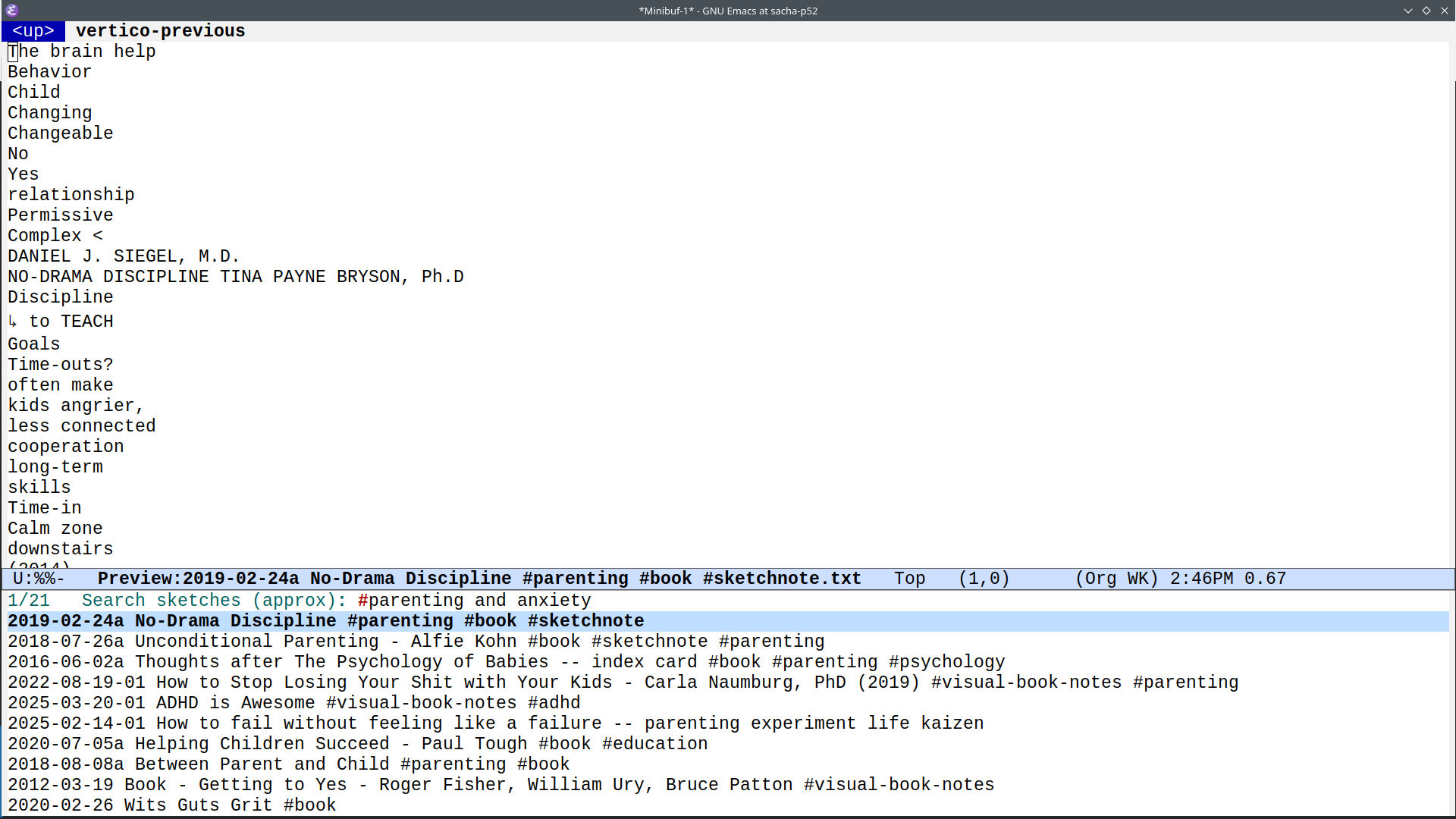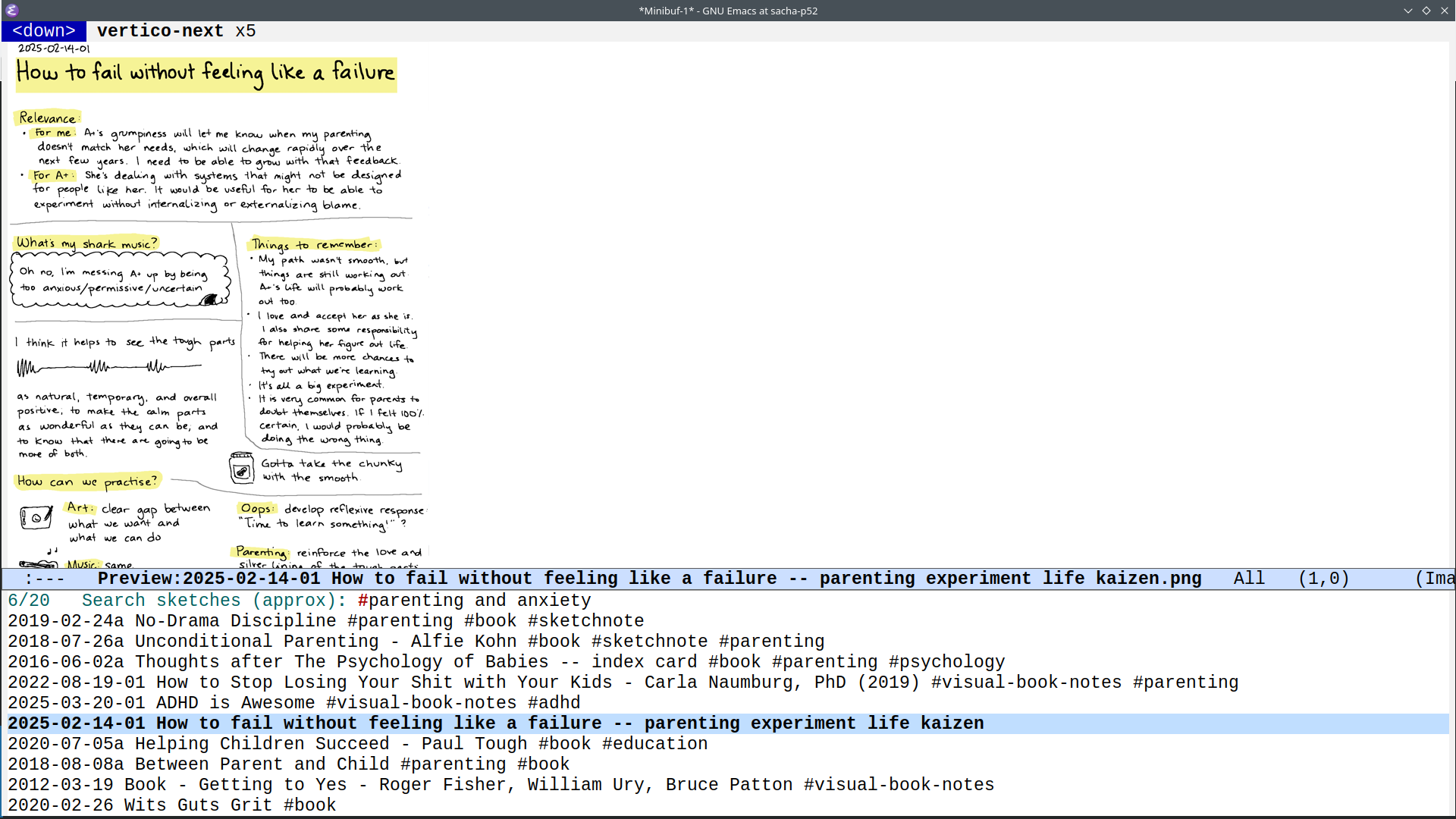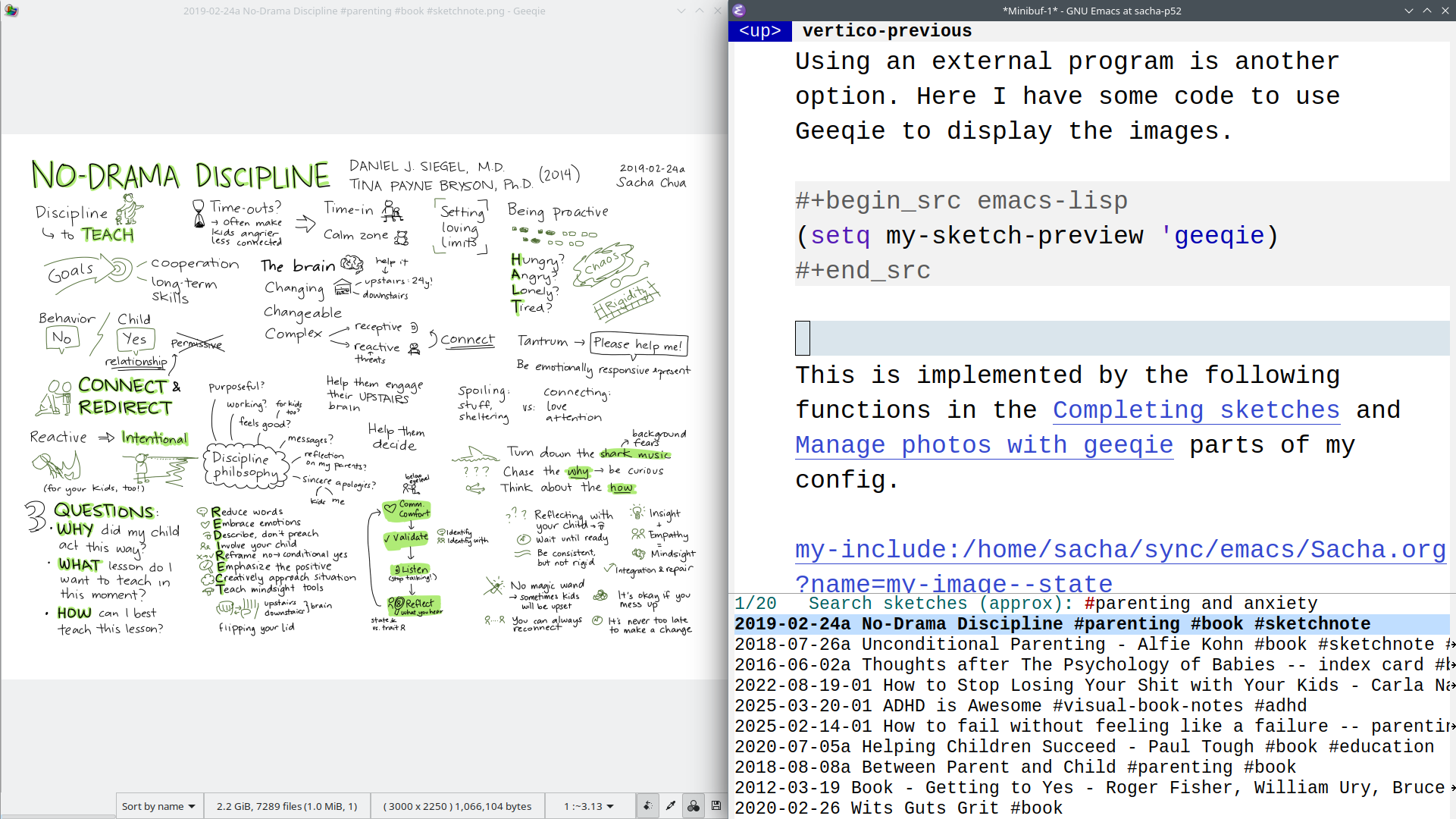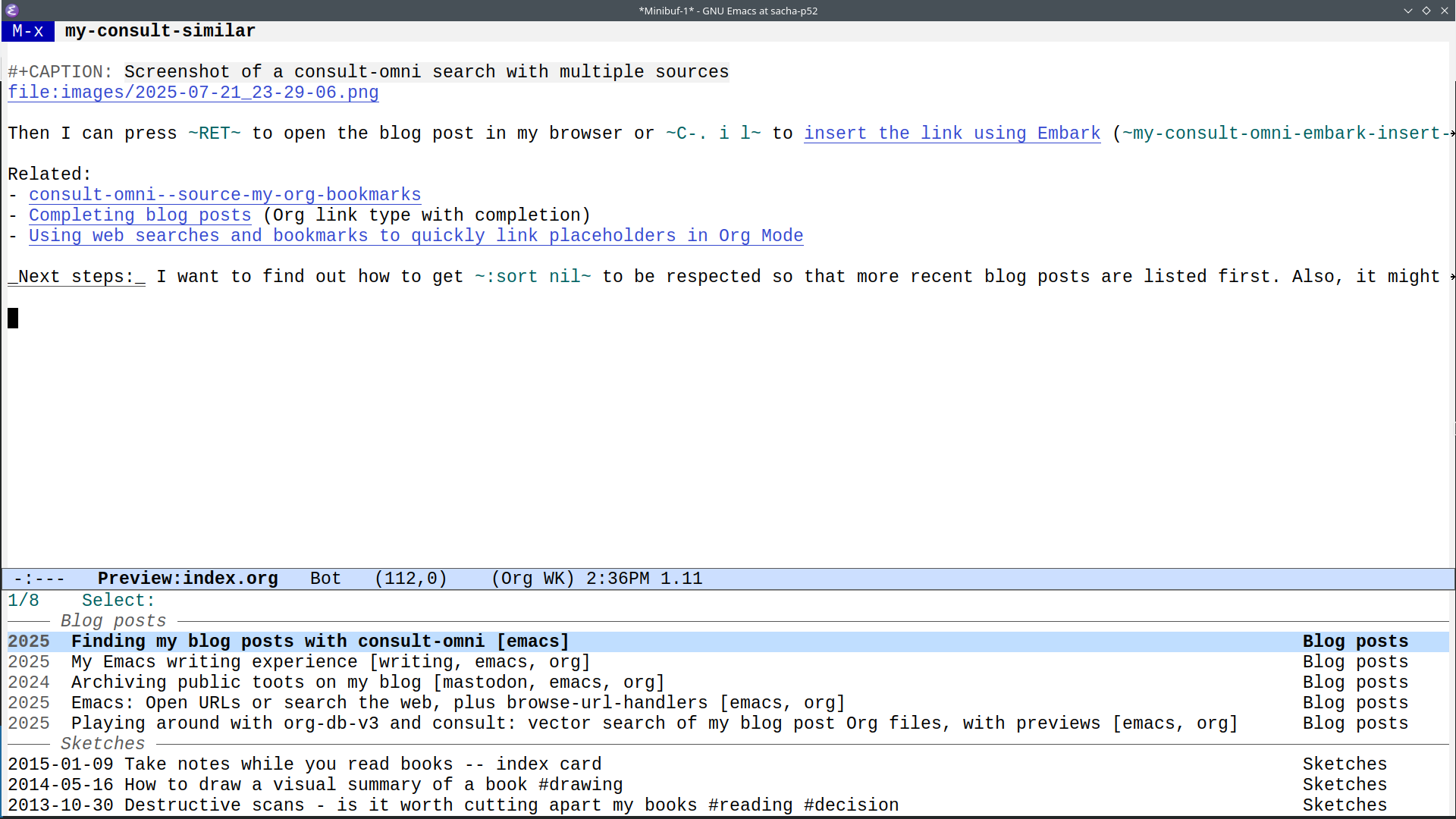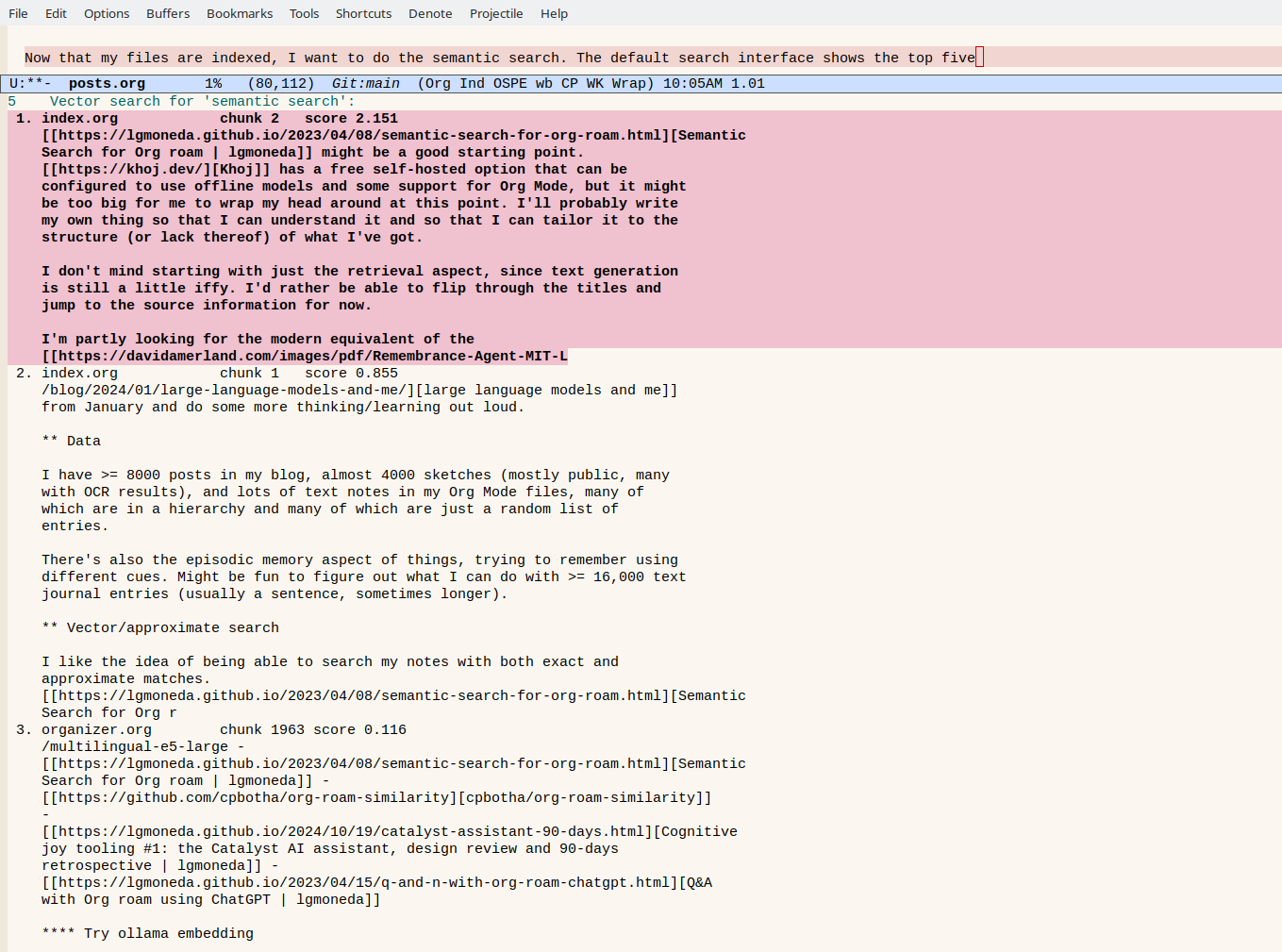2025-12-01 Emacs news
| emacs, emacs-news- EmacsConf is next weekend!
- Upcoming events (iCal file, Org):
- Emacs Paris: S: Emacs workshop in Paris (online) https://emacs-doctor.com/ Thu Dec 4 0830 America/Vancouver - 1030 America/Chicago - 1130 America/Toronto - 1630 Etc/GMT - 1730 Europe/Berlin - 2200 Asia/Kolkata – Fri Dec 5 0030 Asia/Singapore
- EmacsATX: Emacs Social https://www.meetup.com/emacsatx/events/311893360/ Thu Dec 4 1600 America/Vancouver - 1800 America/Chicago - 1900 America/Toronto – Fri Dec 5 0000 Etc/GMT - 0100 Europe/Berlin - 0530 Asia/Kolkata - 0800 Asia/Singapore
- M-x Research: TBA https://m-x-research.github.io/ Fri Dec 5 0800 America/Vancouver - 1000 America/Chicago - 1100 America/Toronto - 1600 Etc/GMT - 1700 Europe/Berlin - 2130 Asia/Kolkata – Sat Dec 6 0000 Asia/Singapore
- EmacsConf https://emacsconf.org - Dec 6 - 7
- Emacs.si (in person): Skupni ogled Emacs konference 2025 https://dogodki.kompot.si/events/b4137a21-8783-4bc5-993e-929c5ddf43bc Sat Dec 6 1445 Europe/Ljubljana
- Emacs.si (in person): Emacs.si meetup #12 2025 (v #živo) https://dogodki.kompot.si/events/37459eb7-b2f8-4df3-a2ce-fd0204274af5 Tue Dec 9 1900 CET
- OrgMeetup (virtual) https://orgmode.org/worg/orgmeetup.html Wed Dec 10 0800 America/Vancouver - 1000 America/Chicago - 1100 America/Toronto - 1600 Etc/GMT - 1700 Europe/Berlin - 2130 Asia/Kolkata – Thu Dec 11 0000 Asia/Singapore
- Atelier Emacs Montpellier (in person) https://lebib.org/date/atelier-emacs Fri Dec 12 1800 Europe/Paris
- Emacs configuration:
- Emacs Lisp:
- Appearance:
- Navigation:
- basics of emacs macros (and interactive regex replace) (19:34)
- scrollpanel: a better minimap for Emacs (@cehteh@social.tchncs.de)
- [Experimental] hs-indent-fold.el - Click-to-fold via indentation highlighting (leaving fringe/margin free) (Reddit)
- 2 commands for every cracked #emacs nerd 🔥🤓#linux (01:14) - exchange-point-and-mark, mark-whole-buffer
- kirigami.el, a unified method to fold and unfold text in Emacs, has been added to MELPA (Release 1.0.0) (Reddit)
- Hyperbole:
- Dired:
- Org Mode:
- UOMF: Generate a List for the next Upcoming Recurring Meeting Instances (@publicvoit@graz.social)
- Org-GTD v4 is in beta - looking for beta testers!
- Package to insert multiple org-roam nodes using Helm (Reddit)
- My Emacs Presentation Stack (Reddit)
- orgit-file v0.3.0 - Revision-aware Org links to Git files with automatic web export (Reddit)
- An Ode to Org Babel (@donaldh@hachyderm.io)
- Lens_r | Literate Tests with Org Mode and Emacs Lisp
- Quick tutorial to get started on Org Social | Andros Fenollosa (@lobsters@mastodon.social)
- org-social.el 2.7: migration posts, boosting
- Org development:
- Completion:
- Update on Consult and Jinx - Jinx is a spell-checker
- Coding:
- Shells:
- Mail, news, and chat:
- Fun:
- AI:
- Community:
- Other:
- Emacs development:
- emacs-devel:
- Re: Suggestion: (re)move ~/.authinfo from auth-sources by default in favour of ~/.authinfo.gpg? - Michael Albinus - Emacs 31 won't create .authinfo by default, but default order of auth-sources will probably be the same
- Re: Why don't we have a 'completion-command-overrides'? - Kristoffer Balintona might be a good option
- hideshow.el: New commands 'hs-cycle' and 'hs-toggle-all'. (Bug#79877)
- New display of outgoing revisions count in VC-Dir
- Use treesit-extra-load-path for more values of treesit-auto-install-grammar
- Add current subject to future history in `message-change-subject'
- * lisp/cus-start.el: Make 'treesit-extra-load-path' customizable.
- Add new commands 'merge-frames' and 'split-frame'
- Make diff-revert-and-kill-hunk consider an active region
- Make it easier to enable Abbrev mode by default
- Make diff-apply-hunk consider an active region
- Support `toolkit-theme-set-functions' on Android and execute hooks safely
- New commands to rewind decentralized VCS branches
- Default split-window-preferred-direction to 'longest'
- New command alias vc-restore
- Add `toolkit-theme' and 'toolkit-theme-set-functions'
- The –script option now enforces lexical binding (bug#79760)
- Show the diff buffer with replacements by typing 'd' in 'query-replace'
- ; * etc/NEWS: Expand on showing warnings on first daemon frame.
- ; * etc/NEWS: Mention the change about daemon startup warnings (bug#79783)
- Fix `editorconfig-display-current-properties`
- emacs-devel:
- New packages:
- code-awareness: Code Awareness collaboration package (MELPA)
- gdshader-mode: Major mode for Godot gdshader files (MELPA)
- kirigami: A unified method to fold and unfold text (MELPA)
- real-mono-themes: Real monochromatic color themes (MELPA)
- sparkweather: Weather forecasts with sparklines (MELPA)
- structurizr: Major mode for Structurizr DSL (MELPA)
Links from reddit.com/r/emacs, r/orgmode, r/spacemacs, Mastodon #emacs, Bluesky #emacs, Hacker News, lobste.rs, programming.dev, lemmy.world, lemmy.ml, planet.emacslife.com, YouTube, the Emacs NEWS file, Emacs Calendar, and emacs-devel. Thanks to Andrés Ramírez for emacs-devel links. Do you have an Emacs-related link or announcement? Please e-mail me at sacha@sachachua.com. Thank you!

